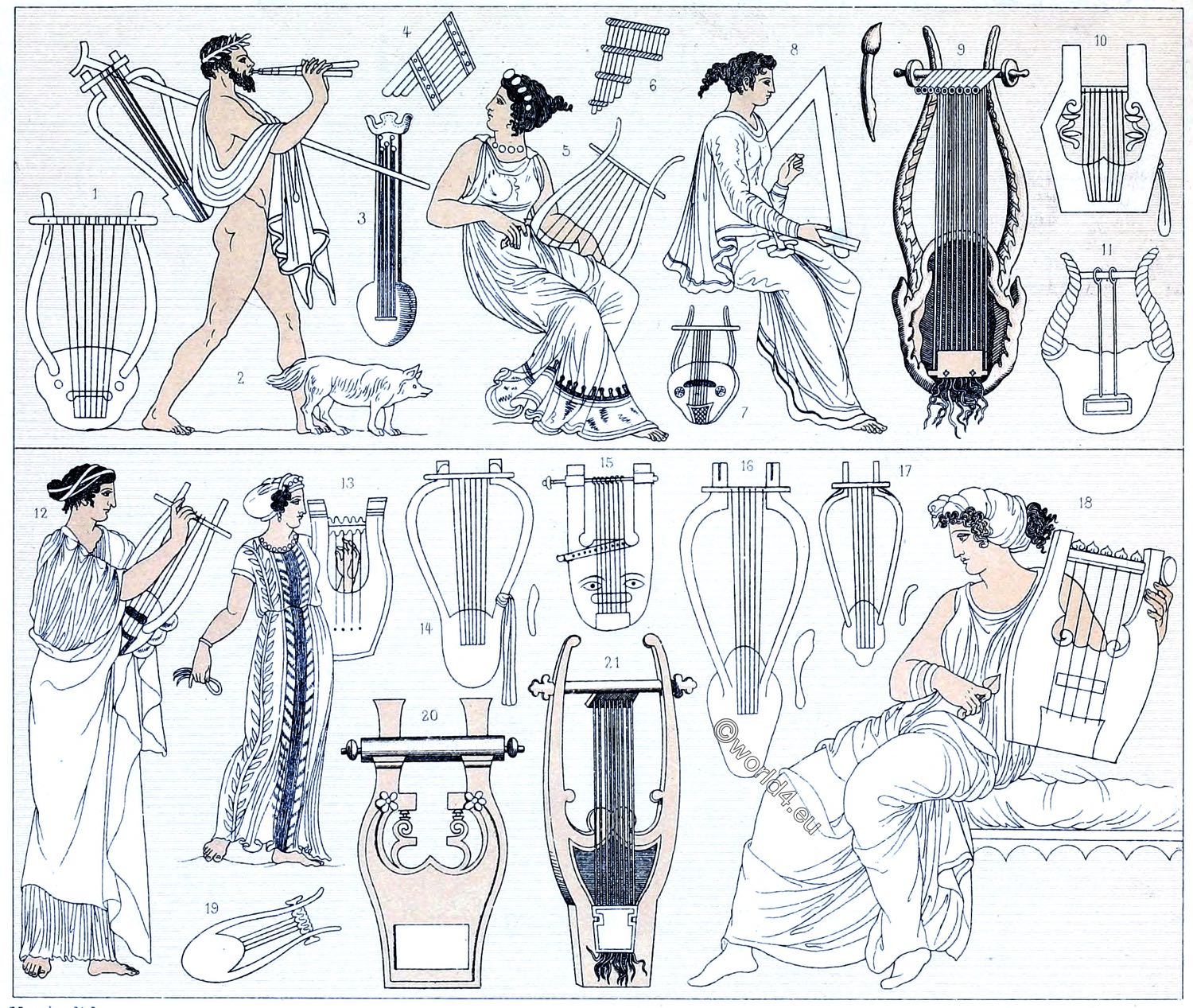
GREEK HOMERIC – 1200 BC. – 500 BC.
PLATE Nr. 8
The Homeric costume of early Greeks.
Dress of ancient Greece.
History
The early Greeks are called Homeric, because they were the people who waged the wars described by Homer in his poems. These wars were the result of the Greeks invading the country we now know as Greece and forcing out the Cretans.
Most of the stories of Greek heroes that have come down to us, are about the men who lived in this period.
Costume shape & material
The costume worn by these people, though it may look complicated in the picture, was really the simplest type of dress civilized man has ever fashioned. The Greeks did not tailor their clothes, that is, they did not make their garments to fit the body.
Almost all clothes were simple square or rectangular pieces of linen or wool folded, sewn, and worn loose, or draped around the body in different ways.
Impression and situation
The two people in the picture are probably just going into the temple in the background for a religious ceremony. That is why the woman is wearing a vine in her long hair and the man is carrying a tall vine-entwined staff.
Women’s fashion in Greece at the time of Homer
The chiton
The woman is wearing what we would call a dress, but the Greeks called it a chiton. She has taken a piece of linen two feet higher than she is and twice as wide as her measurements from elbow to elbow. Than she made the overfold.
Arrangement of chiton
As it is not so clear in the picture, perhaps its arrangement should be explained.
Notice the border around her hips — only a small section is visible. This border is really the actual top of the material, of which almost two feet have been folded down.
This is the overfold, and has two purposes: makes the chiton just the right length, and also forms an extra protection to the upper part of her body. It is now folded in half lengthwise, with the overfold on the outside.
How a chiton is dressed
It is a little difficult to explain how it was put on. Let us imagine it was made of a stiff material that would stand up. It could be set up on narrow edge like a half opened book.
The wearer would stand between the pages, pull them around him, and then form a collar by pinning the front and back sides together on each side of the neck. This explanation sounds as if the entire left arm would be covered. But, since the chiton was made of soft material, it fell from the brooches in soft folds, and the left arm could be put through the opening between the last pin and the folded edge.
The right side was sometimes left open, though the lady in the picture has sewn hers. Under the overfold, she has tied a ribbon or string around her waist, and is now ready to put on her shawl.
Accessories and jewellery of ancient Greek women
The shawl in the picture has an allover pattern of swastikas (the Greeks liked this figure in their ornamentation) and a vine border. It is a square piece of wool that she has thrown over her left shoulder, around the back, under her right arm, and over her right shoulder.
It sounds difficult, but by studying the picture you will understand how she did it. Notice that she is wearing a ring and two snake bracelets. Greek women did not object to jewelry and wore it often.
Men’s costume in Greece at the time of Homer
The man is wearing a chiton also. (Greek men and women wore the same type of clothes.) His, however, does not have the overfold.
He is wearing a large cloak called the himation. It, too, is a square or rectangular piece of wool that is draped over his left shoulder, under his right arm, and again over his left shoulder. Notice the overfold at the top.
The early Greeks went barefoot very often. The men allowed their hair and beards to grow long.
Source: Museum Extension Project. History of Costume.

Related
Discover more from World4 Costume Culture History
Subscribe to get the latest posts sent to your email.






